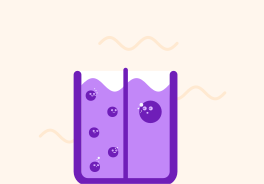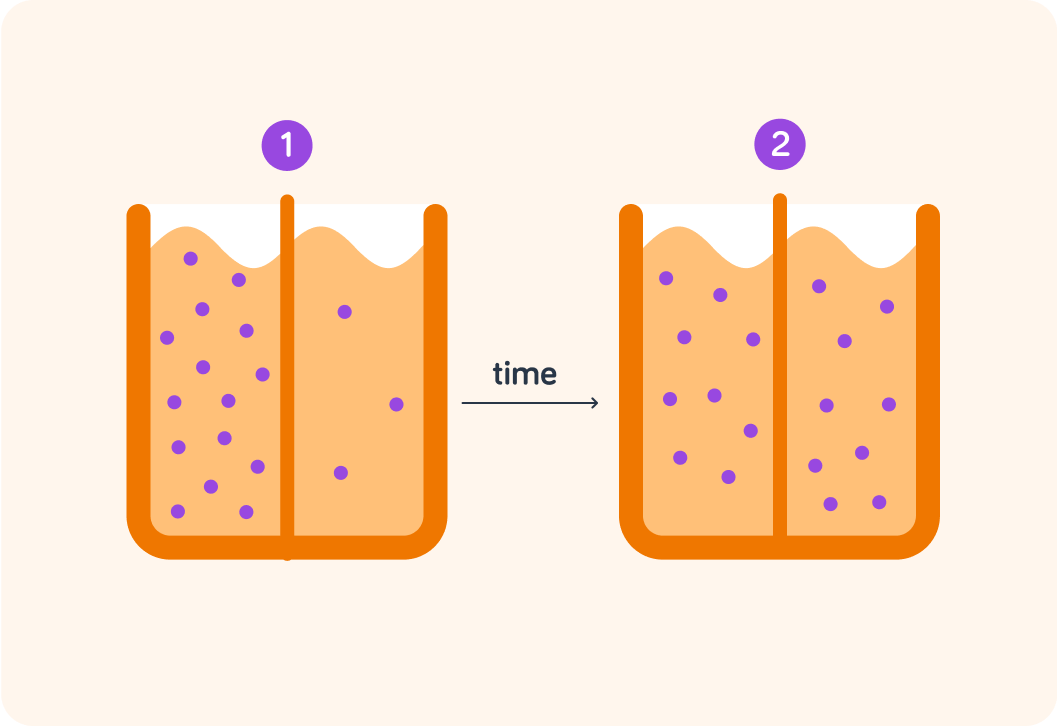YOU ARE LEARNING:
Diffusion

Diffusion
Diffusion is a natural process that is crucial for how substances move in and out of cells.
In this lesson we will look at diffusion, which is a type of transport through the cell membrane.
This picture is an example of diffusion.
We start with situation 1 and after some time we arrive at situation 2.

What has happened over time from situation 1 to situation 2?
A) The particles spread. B) The particles clustered. C) The particles stayed where they were.


How did the particles move?
A) From high to lower concentration B) From low to higher concentration


Diffusion...
is the movement of particles from high to lower concentration.

If we place a cell in a fluid with a lot of salt, what would happen as a result of diffusion?

We talk about net diffusion if we only consider the start and end situation of diffusion. When will there be no net diffusion at all?

What can move as a result of diffusion? Pick all the options you think are correct.

You can select multiple answers
Diffusion is the spreading out of particles in a solution or gas. The particles will move from high to lower concentration, until the concentration is balanced.
What do you think might diffuse into cells?

What do you think might diffuse out of cells? Pick all the options you think are correct.

You can select multiple answers
For cells, oxygen and other small particles (like salts), which the cell requires to function, diffuse into the cell. Carbon dioxide and urea, which are waste products, diffuse out of the cell.
